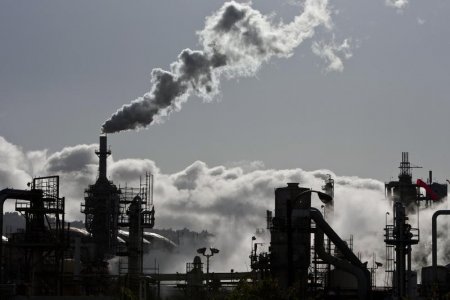-
Tips for becoming a good boxer - November 6, 2020
-
7 expert tips for making your hens night a memorable one - November 6, 2020
-
5 reasons to host your Christmas party on a cruise boat - November 6, 2020
-
What to do when you’re charged with a crime - November 6, 2020
-
Should you get one or multiple dogs? Here’s all you need to know - November 3, 2020
-
A Guide: How to Build Your Very Own Magic Mirror - February 14, 2019
-
Our Top Inspirational Baseball Stars - November 24, 2018
-
Five Tech Tools That Will Help You Turn Your Blog into a Business - November 24, 2018
-
How to Indulge on Vacation without Expanding Your Waist - November 9, 2018
-
5 Strategies for Businesses to Appeal to Today’s Increasingly Mobile-Crazed Customers - November 9, 2018
EPA Sets Tougher Pollution Standards For Oil Refineries
The move fulfills a long-delayed campaign promise by President Barack Obama, but sets up a fresh confrontation with Republicans already angry about the administration’s plans to curb carbon pollution from coal-fired power plants and to regulate small streams and wetlands.
Advertisement
There are 142 large refineries in the United States, and 6.1 million people within three miles of them.
Also coming out this week from the EPA are additional rules to make oil refineries in particular make further reductions in their air pollution and to start monitoring at their fence lines for benzene, a potential cancer-causer.
Facing a court-ordered deadline, the EPA is expected to act by Thursday to set a new ozone standard.
EPA Administrator Gina McCarthy said the tighter standards will help lower the cancer risk for people living near the nation’s almost 150 petroleum refineries.
“The recommended lower bound of 60 ppb would certainly offer more public health protection than levels of 70 ppb or 65 ppb and would provide an adequate margin of safety”, the committee said in a letter.
“Companies have already spent billions of dollars to reduce emissions by installing flare gas recovery and flare minimization systems to reduce greenhouse gas emissions, and air quality continues to improve as a result of these voluntary programs and existing regulations”, API Downstream Group Director Bob Greco said in a written statement.
While the EPA has made substantial improvements since proposing the new standards past year, the API said, the regulations could cost up to $1 billion.
The EPA said the capital cost to refiners will be about $283 million, with an annualized cost of $63 million, but that the standards will have a “negligible impact on the costs of petroleum products”, like gasoline and diesel fuel. Each refinery will need to put up air monitors that encircle the facility, as many as 12 to 24 monitors for each site depending on the size, she said.
The EPA reported that low-income and minority populations live near refinery fencelines at almost twice the rate of the general population.
With air quality the best it’s been in decades, “now is not the time for a new ozone rule”, said Jay Timmons, the group’s president and CEO. “And we know that when you pay more attention to your emissions you’re more inclined to reduce them”.
The rule, when fully implemented in 2018, is estimated to reduce 5,200 tons of air toxic pollution per year and 50,000 tons per year of volatile organic compounds, which are a component of the air pollution ozone.
McCabe declined to specify what the new ozone limit will be, but assured senators that the standard will be based on the law, a thorough scientific review and recommendations from independent advisers.
Advertisement
“Less smog means better health for all of us”, Billings said.




























